According to the US Department of Veterans Affairs website, nearly 4.9 million individuals—including Veterans of every conflict, from the Revolutionary War to the wars in Iraq and Afghanistan—are honored by burial in our national cemeteries.
Each year about 15 percent of all eligible Veterans are interred in a national cemetery, while about 5 percent opt for a State, Territorial or Tribal Veterans Cemetery. The national cemeteries’ memorial landscapes convey critical stories about American history and reflect the evolution of our care and commemoration of our military veterans.
Brief History of National Cemeteries
The National Cemetery Administration was established in 1862 when Congress authorized the purchase of land to provide burials for the huge number of soldiers and sailors who died during the American Civil War. Pennsylvania’s Gettysburg National Cemetery was at the forefront of the new cemetery system.

Created in 1863, thousands of Union soldiers were reburied in this new cemetery at Gettysburg, later expanded to accept veterans of the Civil War who died post-war, and veterans of later wars. On November 19, 1863, President Abraham Lincoln dedicated the National Cemetery in Gettysburg, PA. To commemorate Lincoln’s address, tablets bearing the text of his speech were placed in national cemeteries beginning in 1895, and have been placed at each of the subsequent national cemeteries. The cemetery officially closed in 1972.
The Philadelphia National Cemetery, another of the 14 national cemeteries established in 1862 (but in its current location since 1885), is now closed to new interments.

The original national cemeteries were not just places of burial, but were also places where families could come together to commemorate those they lost. In 1868, a federal holiday was established—Memorial Day—to create an annual event from the tradition of Decoration Day, featuring ceremonies at national cemeteries drawing thousands of participants.
Temporary speakers’ stands evolved into permanent rostrums by 1873, some of which were part of larger amphitheaters. In 1919, a new holiday was created to commemorate Armistice Day, recognizing the end of World War I at 11:00am, on November 11, 1918. Named “Armistice Day” in the optimistic hope that WWI was the war “to end all wars” it was renamed “Veterans Day” following World War II to honor veterans of all earlier and subsequent US wars.
Indiantown Gap
As other cemeteries reached capacity, the National Cemetery at Indiantown Gap was created on land donated by the Commonwealth of Pennsylvania in 1976 from the Pennsylvania National Guard’s Fort Indiantown Gap reservation in Lebanon County. The 677-acre site was intended to serve veterans, and their spouses, from Delaware, Maryland, New Jersey, Pennsylvania, Virginia, and West Virginia. The Indiantown Gap Cemetery currently has over 60,000 interments, with funeral services held daily. New spaces are being developed to accommodate additional burial spaces and a columbarium for cremated remains.
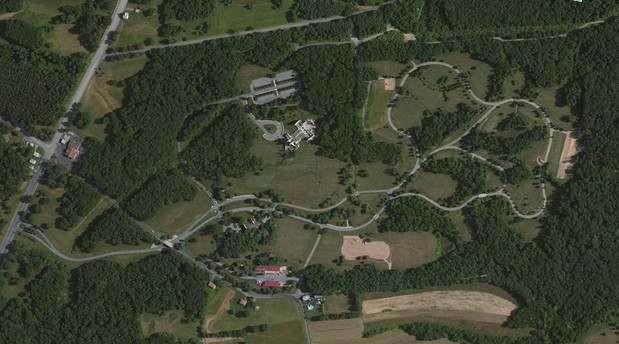
Pennsylvania hosts two other active national cemeteries: the National Cemetery of the Alleghenies (dedicated in 2005) near Pittsburgh in Washington County and the Washington Crossing National Cemetery (dedicated in 2009) north of Philadelphia in Bucks County.
At Indiantown Gap, a statewide design competition was held for the creation of the Pennsylvania Veterans’ Memorial that would serve as a gathering space for large events and a tribute to honor all Pennsylvania veterans. The Pennsylvania Veterans’ Memorial Commission was formed by an act of Pennsylvania’s General Assembly in 1988 and organized fund-raising efforts targeting veterans’ organizations and private donors, with the Commonwealth providing the remaining funds necessary to complete construction.
An architecture firm from West Chester, Cee Jay Frederick Associates, won the design competition, creating an open-air site carefully integrated into the larger cemetery to facilitate gatherings and serve as a focal point for the landscape.
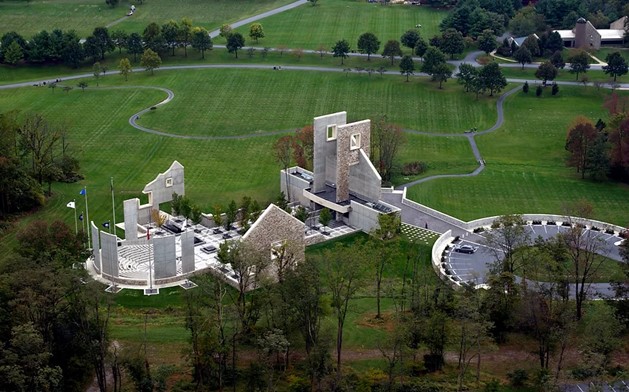
The architects intended the Memorial to be a place of rest and peace where visitors can reflect on the service and sacrifice of all those who served the US Military, during both war and peace. Indiantown Gap’s elaborate Pennsylvania Veterans’ Memorial is the largest monument in the national cemetery system. The memorial was dedicated in 2001.
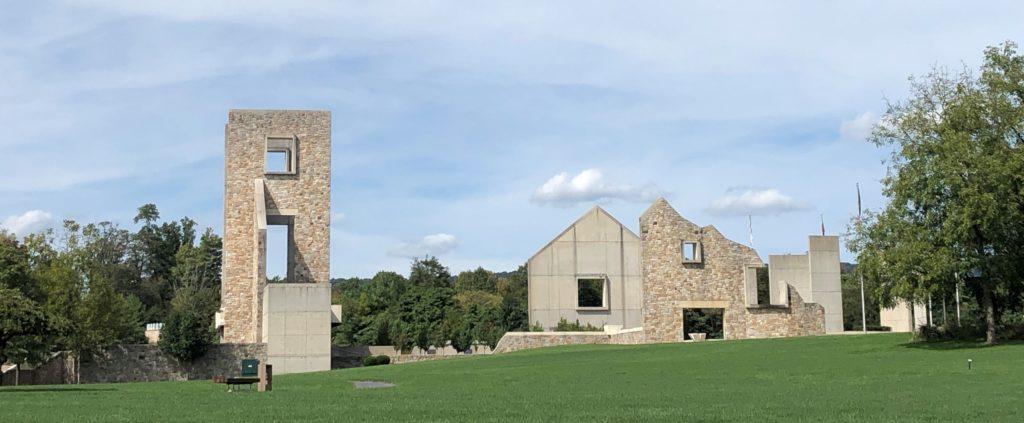
The Memorial evokes a war-torn house of worship, suggesting the ruins of a battlefield landscape, and combining elements of land, air and water. It is strategically situated atop a high point on the sprawling property, accessible from the winding parkway that travels through the cemetery, and footpaths. As visitors walk through and around the Memorial, they can take in various vistas across the cemetery’s landscape.

The Memorial contains restrooms, a casual amphitheater, and a plaza with fountains.
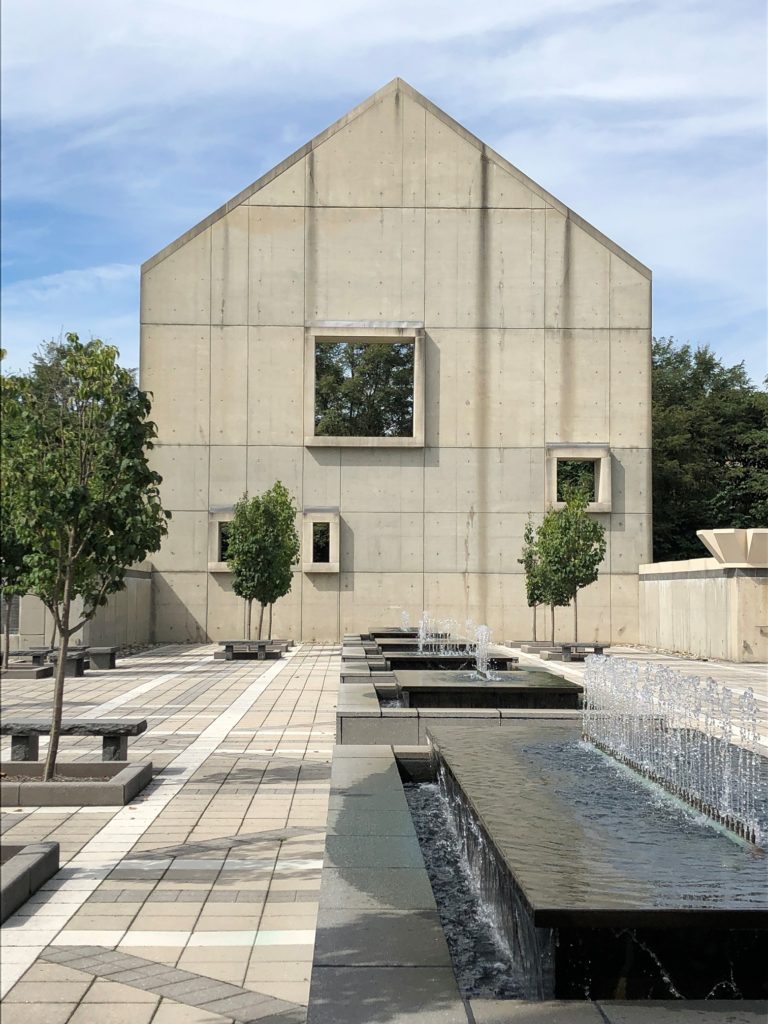
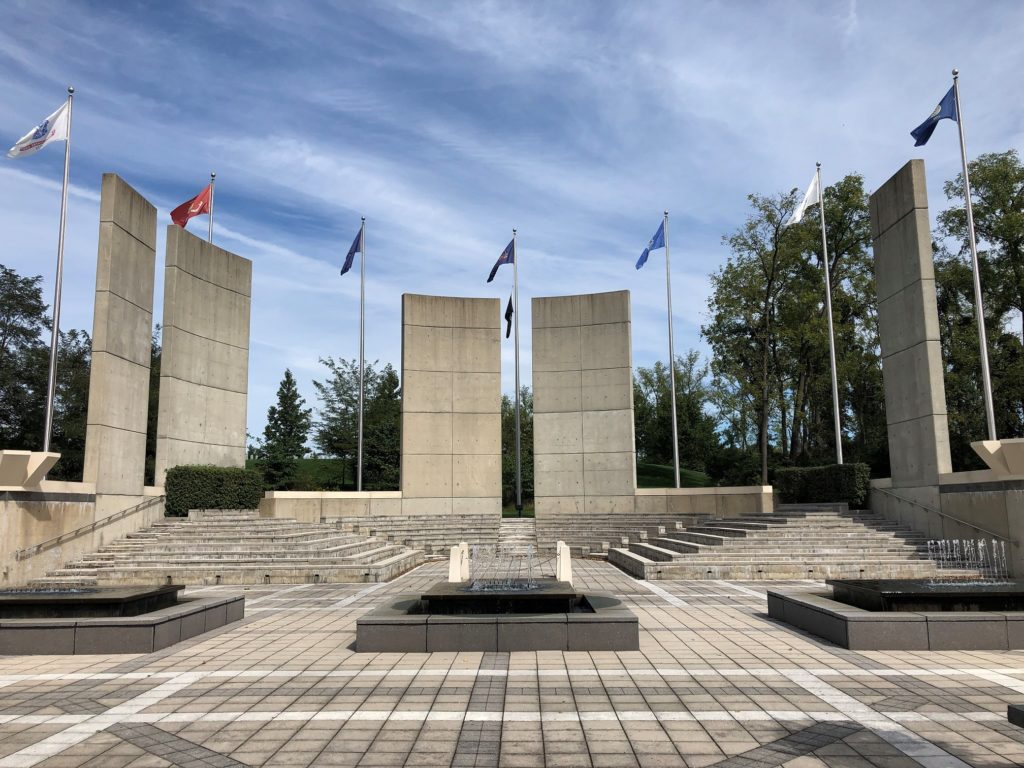
The Indiantown Gap National Cemetery is used for at least three large-scale memorial services each year—Memorial Day, Veterans Day, and a candlelight service in December.
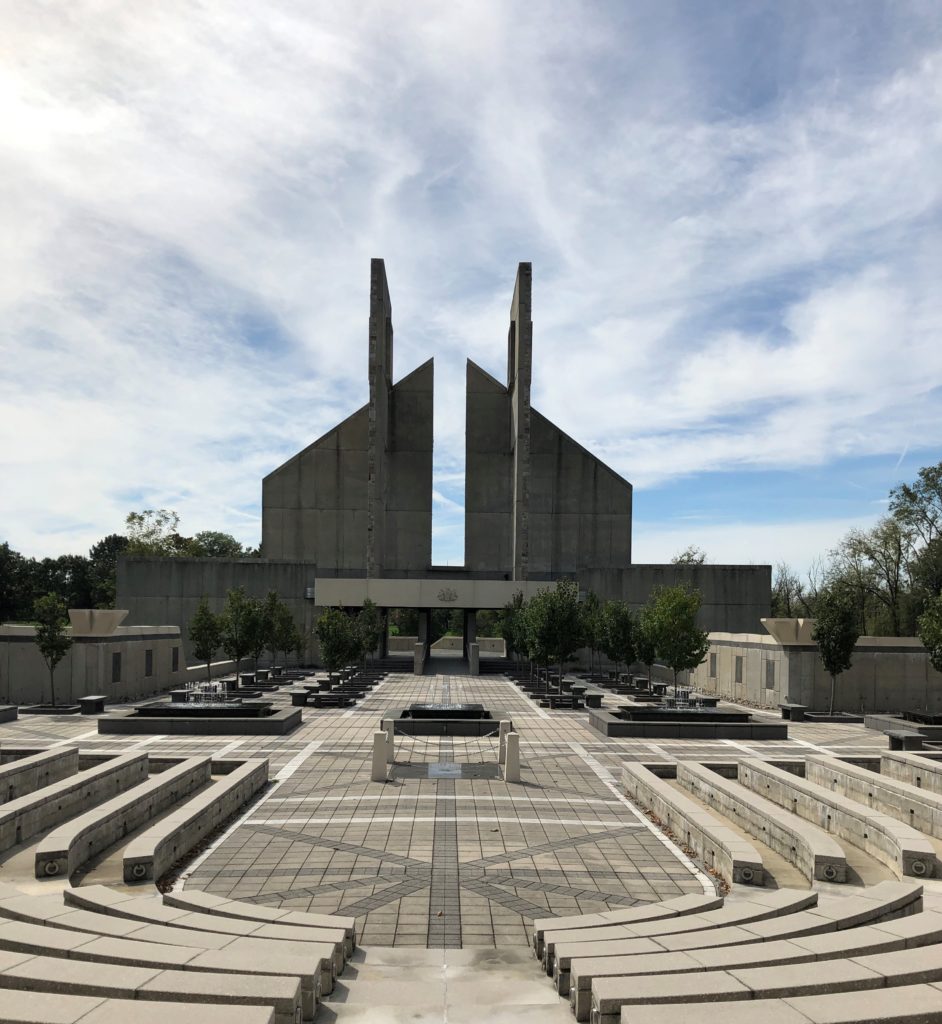
The Memorial serves an integral role in those events, but, like the rest of the cemetery, it is also visited daily by those attending funeral services or visiting the graves of their loved ones.
National Cemeteries and the National Register
In 2011, the National Park Service’s Keeper of the National Register cited Congress’s recognition of national cemeteries as “nationally significant places of burial and commemoration” and clarified that these resources are eligible for listing in the National Register of Historic Places regardless of age.
More than one hundred National Cemetery Administration properties are currently listed, and several are part of National Historic Landmark districts. The Indiantown Gap National Cemetery has not been individually nominated for National Register listing yet. It is located within the eligible Fort Indiantown Gap historic district.
To learn more or visit
Indiantown Gap National Cemetery is open daily, from dawn to dusk. The drive that meanders through the cemetery is impressively lined with flags until Veterans Day, when they are removed to limit winter weather damage. In December, the wreaths marking the gravesites makes a dramatic impact on visitors. Be sure to walk through the Pennsylvania Memorial near the center of the property, any time of year. See the cemetery’s website for information about the annual Memorial and Veterans Day ceremonies, and the candlelight service in December. For more information, visit https://www.cem.va.gov/cems/nchp/indiantowngap.asp.
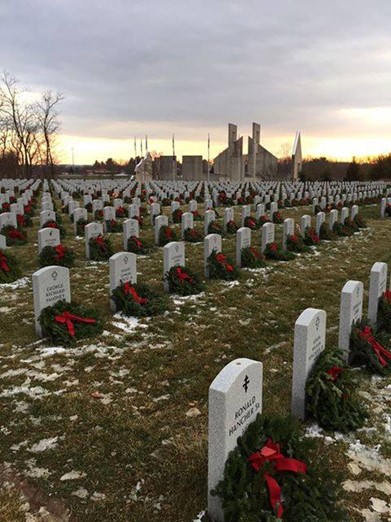
The Gettysburg National Cemetery is famous as the site of President Lincoln’s Gettysburg Address, delivered at the cemetery’s dedication ceremony on November 19, 1863, four and a half months after the battle. In advance of touring the cemetery, visit the National Park Service’s website for the Gettysburg National Military Park for background history at https://www.nps.gov/gett/planyourvisit/national-cemetery-virtual-tour.htm.
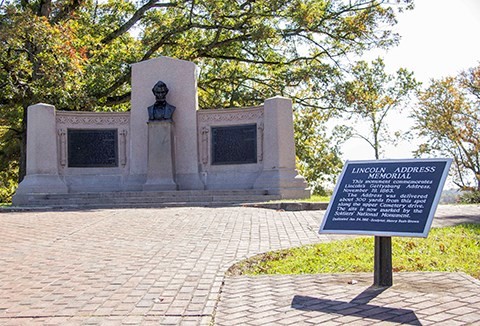
The Philadelphia National Cemetery is open daily from 8:00am-sunset and is administered through the Washington Crossing National Cemetery. For more information, visit https://www.nps.gov/nr/travel/national_cemeteries/pennsylvania/philadelphia_national_cemetery.html.
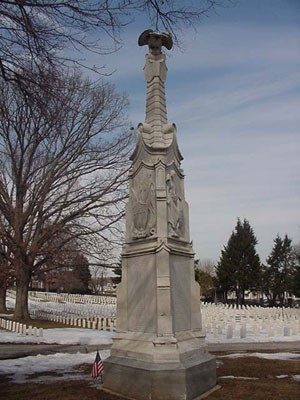
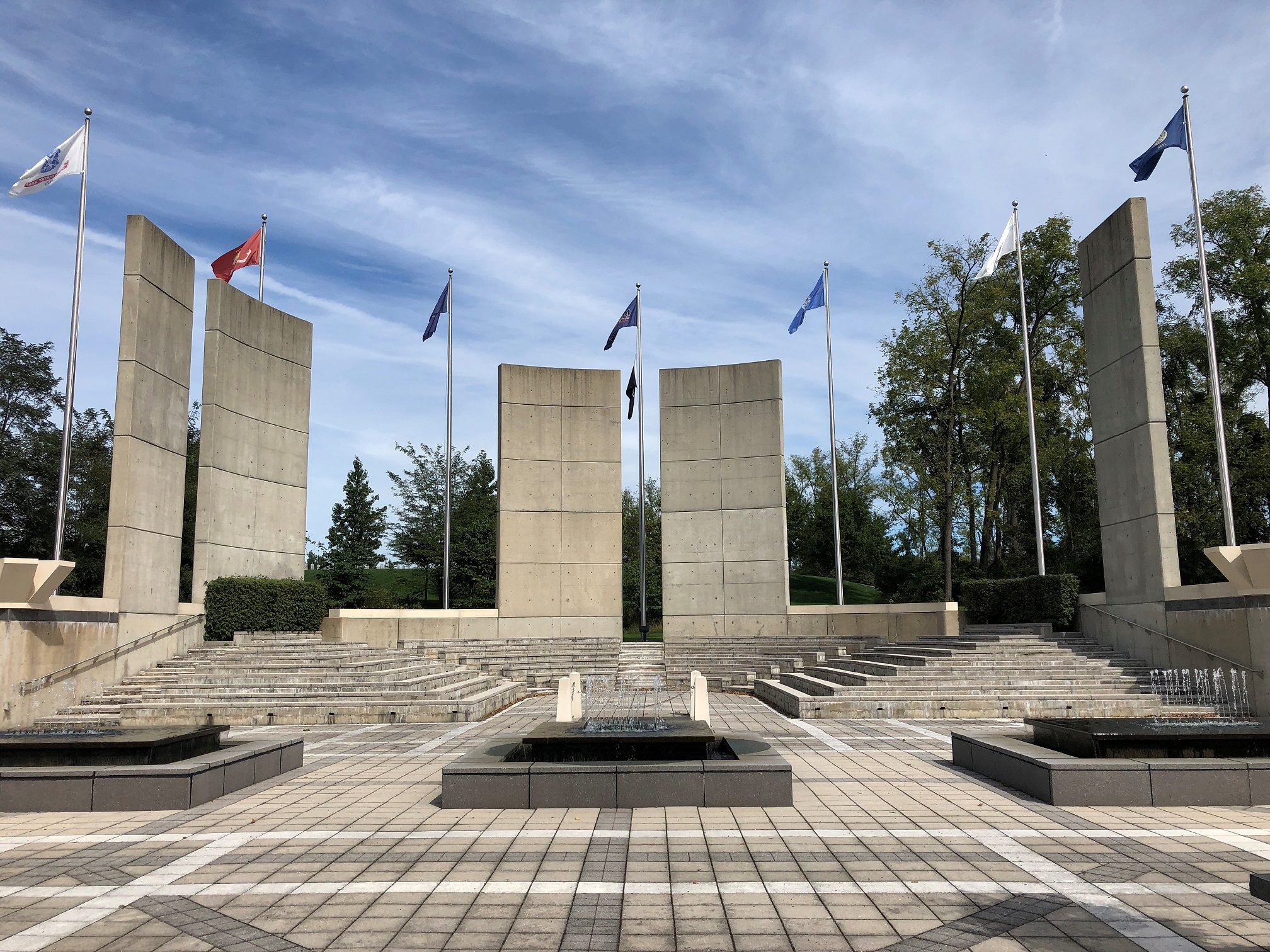
April – great photos of a meaningful resource. Thanks for sharing and tiem to get a wreath. Scott Doyle
Thanks, April, for this review of Indiantown Gap cemetery. It is meaningful to me especially since my brother’s ashes were buried there in 2021, many years after his death in 2007. I can even see the gravesite at the far right of the aerial photograph. I very much appreciate all of the stories you and PA SHPO generate!
My favorite part of this article is the memorial landscapes of the national cemeteries tell important stories about American history and represent the growth of our care for and commemoration of war members. Someone recently told me about this and it is different from what I understand. Thanks for helping me understand state cemetery.
My brother was cremated with interment at Indian Town Gap Cemetray on 6/3/2022.
His name is James Ricky Burk. Date of death was April 14,2022. Would like to know if a plaque was put on where his ashes are at the cemetary. If so, how would I can i find this on line.